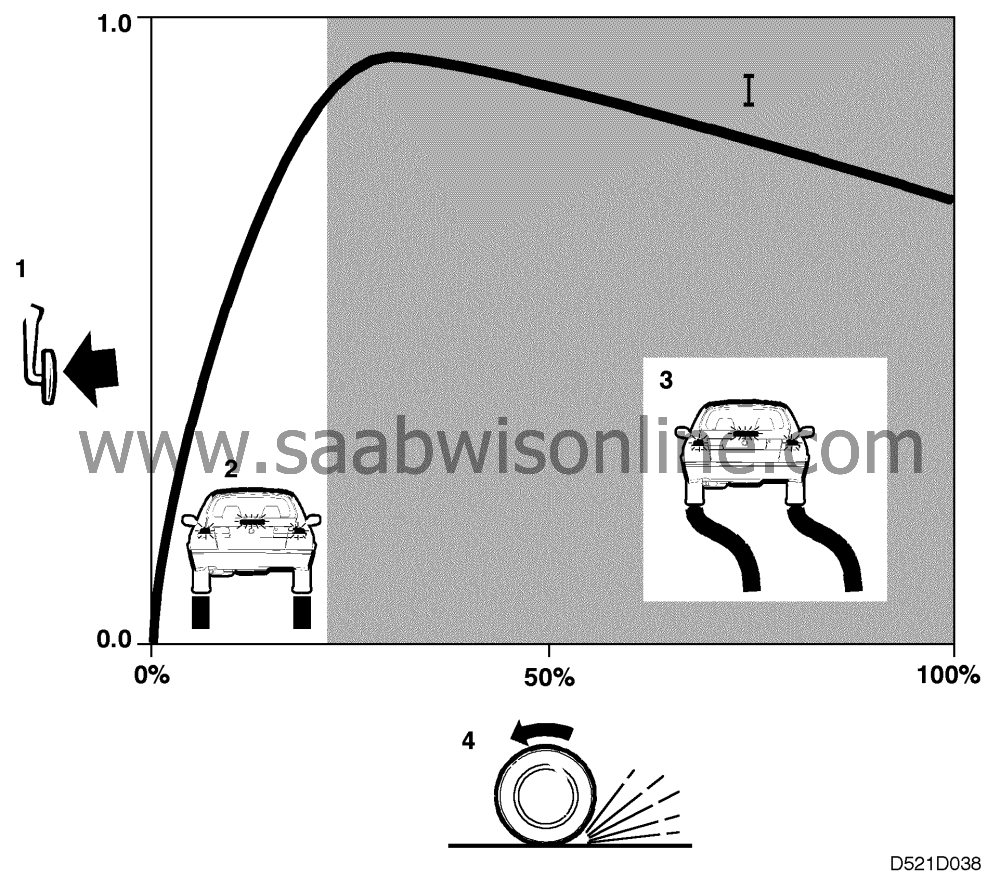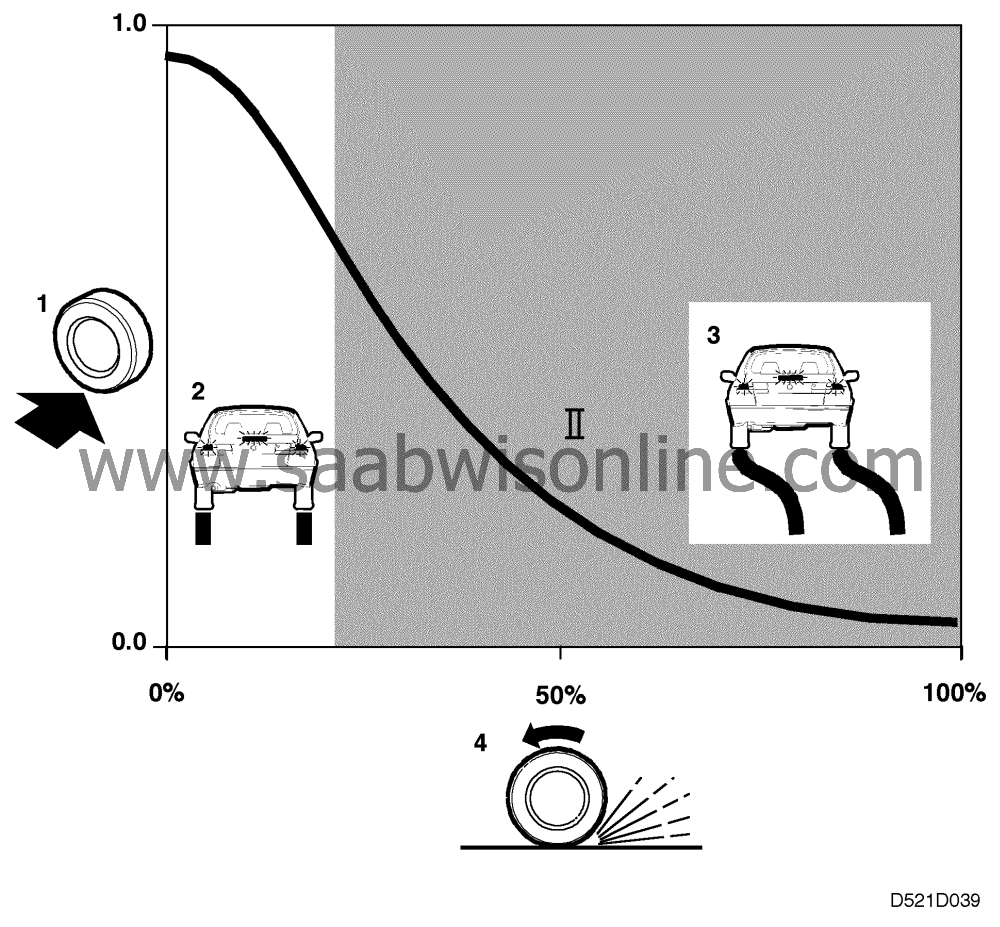General
The car is equipped with two independent brake systems:
|
•
|
Footbrake system with ABS
|
ABS brakes (Anti-lock Braking System) have been developed to provide
optimum braking with no loss of directional stability under widely varying conditions. The
stopping distance of a car is influenced by a variety of factors, including weather conditions,
road surface, traffic conditions and the amount of brake pressure applied.
The ABS braking system provides modern braking systems with control functions that
enable maximum braking effect to be applied in critical situations, regardless of road
conditions.
All Saab 900 models are equipped with the ABS braking system.
The footbrake system is divided into two circuits. One circuit comprises the front right
wheel and rear left wheel, while the other comprises the front left wheel and rear right wheel.
The main advantages of the ABS system are:
|
•
|
No loss of directional stability on
braking.
|
|
•
|
Steering control retained even during heavy braking.
|
|
•
|
Shortest possible braking distance.
|

The forces acting on the tyre consist entirely of braking and/or lateral
forces.
To understand how the ABS system provides optimal braking with no
loss of directional stability, we need to examine the play of forces acting on a wheel when it is
braked.

The curve in the diagram shows the relationship between braking force
(expressed as a coefficient) and tyre slip (expressed as a percentage).
Braking force is equivalent to the coefficient of adhesion, that is to say the
friction between the tyre and the road surface. Each application of braking force gives rise to a
certain degree of slip, ranging from 0%% when the wheel rolls freely to 100%% when the wheel is
locked.
When the brake is first applied at 0, braking force increases sharply but the
degree of slip increases only gradually up to a certain limit. Beyond that point, braking force
decreases with increasing slip.

Maximum braking force (coefficient of adhesion) is reached at a point
known as the limit of optimum slip.
The rising curve in the area between 0%% and the slip limit is called the stable
zone. That part of the curve situated between the slip limit and 100%% slip is called the unstable
zone, since stable braking is not possible in this zone. When the slip limit is exceeded, the
wheels will lock up suddenly unless braking force is immediately reduced. When the tyre has
to transfer a lateral force, as when cornering, this also results in slip.
Curve II on the diagram shows lateral force as a function of slip. As can be
seen, lateral force falls away sharply with increasing slip. At 100%% slip, that is to say when the
wheels lock up, no lateral force remains for steering and the driver will no longer have control
over the vehicle.

Both curves are shown on the above graph which is superimposed with
the range within which the ABS system is operative. During braking, the system allows braking
force to increase to a point just before the limit of optimum slip and then prevents it from
increasing further. The system then modulates the hydraulic pressure to keep the braking
force as close as possible to the optimum value (the limit of optimum slip) regardless of how
hard the brake pedal is depressed.
Since the ABS prevents the limit of optimum slip from being exceeded, the
tyres never enter the unstable zone. At the same time, some lateral force is preserved to
ensure that steering control is retained (curve II).







